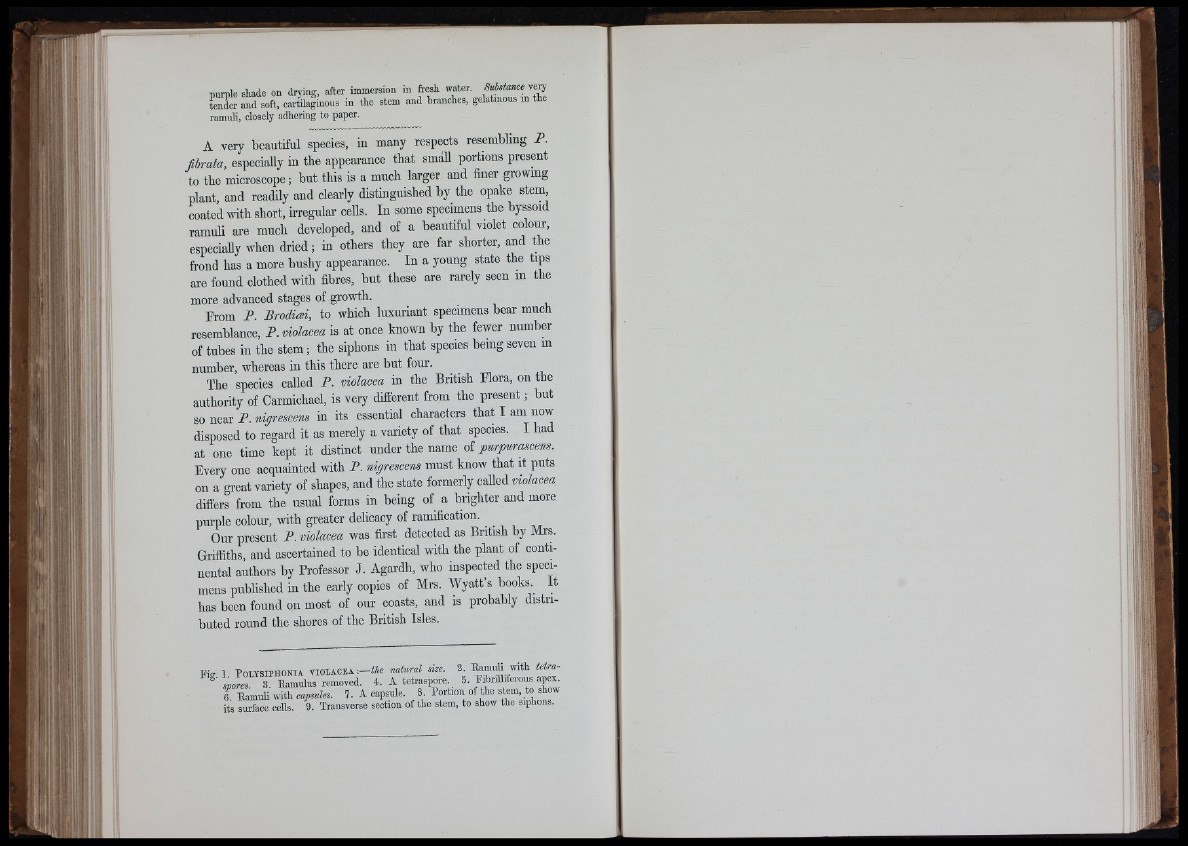
•it ■
t J :
purple shade on drying, after immersion in fresh water. SuMmceyery
tender and soft, cartflaginous in the stem and branches, gelatinous in the
ramuli, closely adhering to paper.
A very beautiful species, in many respects resembling P .
0 ra la , especially in the appearance that small portions present
to the microscope ; bnt this is a much larger and finer growing
plant, and readUy and clearly distinguished by the opake stem,
coated with short, irregular cells. In some specimens the byssoid
ramuli are much developed, and of a beautiful violet colour,
especially when dried; in others they are far shorter, and the
frond has a more bushy appearance. In a young state the tips
are found clothed with fibres, but these are rarely seen in the
more advanced stages of growth.
From P. Brodioei, to which luxuriant specimens bear much
resemblance, P. violacea is at once known by the fewer number
of tubes in the stem ; the siphons in that species being seven m
number, whereas in this there are but four.
The species called P. violacea in the British Flora, on the
authority of Carmichael, is very different from the present ; hut
so near P. nigrescens in its essential characters that I am now
disposed to regard it as merely a variety of that species. I had
at one time kept it distinct under the name of purpmascens.
Every one acquainted with P. nigrescens must know that it puts
on a great variety of shapes, and the state formerly called violacea
differs from the usual forms in being of a brighter and more
purple colour, with greater delicacy of ramification.
Our present P. violacea was first detected as British by Mrs.
Griffiths, and ascertained to be identical with the plant of continental
authors by Professor J. Agardh, who inspected the specimens
published in the early copies of Mrs. 'Wyatt’s books. It
has been found on most of our coasts, and is probably distributed
round the shores of the British Isles.
1 POLYSIMONIA VI0LACE.4. -.— the natural size. 3. Eamu i witli tetia-
spores 3 . Ramulus removed. 4. A tetraspore.^ B. EibriUiferous apex.
I Ramuli with capsules. 7. A capsule. 8 Portion of the stem, to show
its surface cells. 9. Transverse section of the stem, to show the siphons.